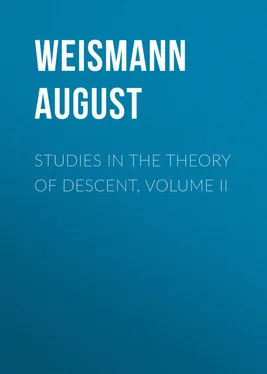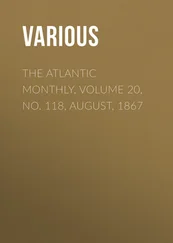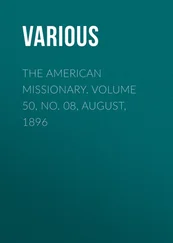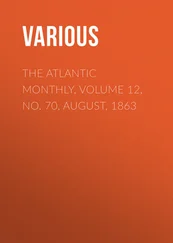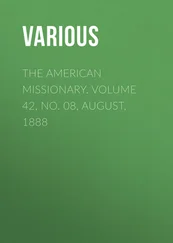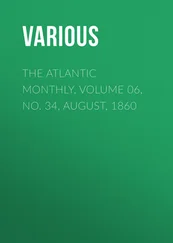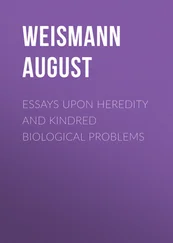August Weismann - Studies in the Theory of Descent, Volume II
Здесь есть возможность читать онлайн «August Weismann - Studies in the Theory of Descent, Volume II» — ознакомительный отрывок электронной книги совершенно бесплатно, а после прочтения отрывка купить полную версию. В некоторых случаях можно слушать аудио, скачать через торрент в формате fb2 и присутствует краткое содержание. Жанр: foreign_antique, foreign_prose, на английском языке. Описание произведения, (предисловие) а так же отзывы посетителей доступны на портале библиотеки ЛибКат.
- Название:Studies in the Theory of Descent, Volume II
- Автор:
- Жанр:
- Год:неизвестен
- ISBN:нет данных
- Рейтинг книги:4 / 5. Голосов: 1
-
Избранное:Добавить в избранное
- Отзывы:
-
Ваша оценка:
- 80
- 1
- 2
- 3
- 4
- 5
Studies in the Theory of Descent, Volume II: краткое содержание, описание и аннотация
Предлагаем к чтению аннотацию, описание, краткое содержание или предисловие (зависит от того, что написал сам автор книги «Studies in the Theory of Descent, Volume II»). Если вы не нашли необходимую информацию о книге — напишите в комментариях, мы постараемся отыскать её.
Studies in the Theory of Descent, Volume II — читать онлайн ознакомительный отрывок
Ниже представлен текст книги, разбитый по страницам. Система сохранения места последней прочитанной страницы, позволяет с удобством читать онлайн бесплатно книгу «Studies in the Theory of Descent, Volume II», без необходимости каждый раз заново искать на чём Вы остановились. Поставьте закладку, и сможете в любой момент перейти на страницу, на которой закончили чтение.
Интервал:
Закладка:
But if individual stages of the post-embryonic development can finally attain to such complete diversity of structure as that of the larva and imago through gradual adaptations to continually diverging conditions of life, this shows that the characters acquired by the single stages are always only transferred to the same stages of the following generation, whilst the other stages remain uninfluenced thereby. This depends upon that form of heredity designated by Darwin “inheritance at corresponding periods of life,” and by Haeckel “homochronic heredity.”
II. Does the Form-relationship of the Larva coincide with that of the Imago?
Having thus established the independence in the variability of the individual stages of metamorphosis, I will now turn to the consideration of the question as to how far a parallelism is displayed in the phyletic development of these stages. Is there a complete congruence of form-relationship between larvæ on the one hand and imagines on the other? does the classification founded on the morphology of the imagines agree with that based on the morphology of the larvæ or not?
If, according to Claus, 6 6 “Grundzüge der Zoologie,” 1875.
we divide the order Lepidoptera into six great groups of families, it is at once seen that these groups, which were originally founded exclusively on imaginal characters, cannot by any means be so clearly and sharply defined by the larval characters.
This is certainly the case with the Geometræ , of which the larvæ possess only ten legs, and on this account progress with that peculiar “looping” movement which strikes even the uninitiated. This group, which is very small, is however the only one which can be founded on the morphology of the larvæ; it comprises only two nearly related families ( Phytometridæ and Dendrometridæ ), and it is not yet decided whether these should not be united into one group comprising the family characters of the whole of the “loopers.”
Neither the group of Micro-lepidoptera, nor those of the Noctuina , Bombycina , Sphingina , and Rhopalocera , can be based systematically on larval characters. Several of these groups are indeed but indistinctly defined, and even the imagines present no common characteristics by which the groups can be sharply distinguished.
This is well shown by the Rhopalocera or butterflies. These insects, in their large and generally brilliantly coloured wings, which are usually held erect when at rest, and in their clubbed antennæ, possess characters which are nowhere else found associated together, and which thus serve to constitute them a sharply defined group. 7 7 [Lepidopterists are of course aware that even these distinctions are not absolute, as no single character can be named which does not also appear in certain moths. The definition in this case, as in that of most other groups of animals and plants, is only a general one. See, for instance, Westwood’s “Introduction to the Classification of Insects,” vol. ii. pp. 330–332. Also some remarks by C. V. Riley in his “Eighth Annual Report” on the insects of Missouri, 1876, p. 170. With reference to the antennæ as a distinguishing character, see Mr. A. G. Butler’s article in “Science for All,” 1880, part xxvii. p. 65. R.M.]
The caterpillars, however, show a quite different state of affairs. Although the larval structure is so characteristic in the individual families of butterflies, these “larval-families” cannot be united into a larger group by any common characters, and the “ Rhopalocera ” would never have been established if only the larvæ had been known. It is true that they all have sixteen legs, that they never possess a Sphinx-like horn, and that they are seldom hairy, as is the case with many Bombycidæ , 8 8 The genus of Morphinæ, Discophora , possesses hairs very similar to those of the genus Cnethocampa belonging to the Bombycidæ .
but these common negative characters occur also in quite distinct groups.
In the butterflies, therefore, a perfect congruence of form-relationship does not exist, inasmuch as the imagines constitute one large group of higher order whilst the larvæ can only be formed into families. If it be admitted that the common characters of butterflies depend on their derivation from a common ancestor, the imagines must have retained certain common characters which enable them to be recognized as allies, whilst the larvæ have preserved no such characters from the period at which the families diverged.
Without going at present into the causes of these phenomena I will pass on to the consideration of further facts, and will now proceed to investigate both the form-relationships within the families. Here there can be no doubt that in an overwhelmingly large majority of cases the phyletic development has proceeded with very close parallelism in both stages; larval and imaginal families agree almost completely.
Thus, under the group Rhopalocera there is a series of families which equally well permit of their being founded on the structure of the larva or on that of the imago, and in which the larvæ and imagines therefore deviate from one another to the same extent. This is the case, for instance, with the families of the Pieridæ , Papilionidæ , Danaidæ , and Lycænidæ .
But there are also families of which the limits would be very different if the larvæ were made the basis of the classification instead of the butterflies as heretofore. To this category belongs the sub-family Nymphalinæ . Here also a very characteristic form of caterpillar indeed prevails, but it does not occur in all the genera, being replaced in some by a quite different form of larva.
In the latest catalogue of Diurnal Lepidoptera, that of Kirby (1871), 112 genera are comprised under this family. Of these most of the larvæ possess one or several rows of spines on most or on all the segments, a character which, as thus disposed, is not met with in any other family.
This character is noticeable in genera 1 to 90, if, from those genera of which the larvæ are known, we may draw a conclusion with reference to their allies. I am acquainted with larvæ of genus 2, Agraulis , Boisd. ( Dione , Hübn.); of genus 3, Cethosia , Fabr.; 10, Atella , Doubl.; 12, Argynnis , Fabr.; 13, Melitæa , 9 9 [The larvæ of genera 14, Phyciodes , and 35, Crenis , are likewise spiny. See Edwards’ “Butt. of N. Amer.” vol. ii. for figures of the caterpillar of Phyc. Tharos : for notes on the larvæ of Crenis Natalensis and C. Boisduvali see a paper by W. D. Gooch, “Entomologist,” vol. xiv. p. 36. The larvæ of genus 55, Ageronia , are also spiny. (See Burmeister’s figure of A. Arethusa , “Lép. Rép. Arg.” Pl. V. Fig. 4). The larvæ of genus 98, Aganisthos , also appear to be somewhat spiny (see Burmeister’s figure of A. Orion , loc. cit. Pl. V. Fig. 6), and this raises the question as to whether the genus is correctly located in its present position. The larvæ of the following genera figured in Moore’s “Lepidoptera of Ceylon,” parts i. and ii., are all spiny: – 6, Cirrochroa (Pl. XXXII.); 7, Cynthia (Pl. XXVI.); 27, Kallima (Pl. XIX.); and 74, Parthenos (Pl. XXIV.). Many species of caterpillars which are spiny when adult appear to be spineless, or only slightly hairy when young. See Edwards’ figures of Melitæa Phaeton , Argynnis Diana , and Phyc. Tharos ( loc. cit. ) and his description of the larva of Arg. Cybele , “Canad. Entom.” vol. xii. p. 141. The spiny covering thus appears to be a character acquired at a comparatively recent period in the phyletic development. R.M.]
Fabr.; 19, Araschnia , Hübn.; 22, Vanessa , Fabr.; 23, Pyrameis , Hübn.; 24, Junonia , Hübn.; 31, Ergolis , Boisd.; 65, Hypolimnas , Hübn. ( Diadema , Boisd.); 77, Limenitis , Fabr.; 81, Neptis , Fabr.; 82, Athyma , Westw.; and finally with those of genus 90, Euthalia , Hübn. – which, according to Horsfield’s figures, possess only two rows of spines, these being remarkably long and curved, and fringing both sides. It may be safely assumed that the intermediate genera would agree in possessing this important character of the Nymphalideous larvæ, viz., spines.
Интервал:
Закладка:
Похожие книги на «Studies in the Theory of Descent, Volume II»
Представляем Вашему вниманию похожие книги на «Studies in the Theory of Descent, Volume II» списком для выбора. Мы отобрали схожую по названию и смыслу литературу в надежде предоставить читателям больше вариантов отыскать новые, интересные, ещё непрочитанные произведения.
Обсуждение, отзывы о книге «Studies in the Theory of Descent, Volume II» и просто собственные мнения читателей. Оставьте ваши комментарии, напишите, что Вы думаете о произведении, его смысле или главных героях. Укажите что конкретно понравилось, а что нет, и почему Вы так считаете.
